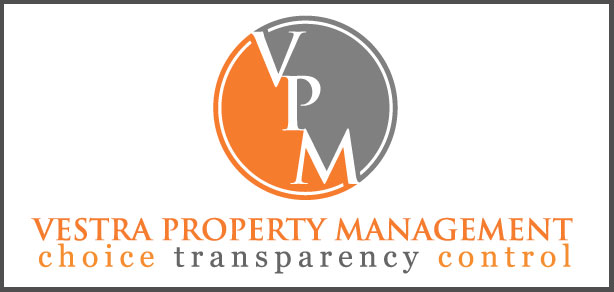and the things they never tell you.
This is the first in a series of articles designed to help leaseholders (always called tenants in the law) to understand (leasehold) law, the Leasehold Valuation Tribunal (LVT) and the “low cost” legal system intended to resolve issues arising on many aspects of leasehold law. Unfortunately there are no definitive sources of information for tenants on how to go to the LVT, and this series of articles is intended to fill in some of the gaps left by LEASE, the LVT and various books which help guide the reader through the process. We will try to outline some of the difficulties you may face, some of the things you need to know and some of the tactics the landlord may try to use against you and to then offer some tips and hints on how to meet these challenges.
Are you missing £630 Million pounds?
We would have liked to start this series with some statistics about the LVT but sadly the Department of Communities (DCLG) which overseas leasehold legislation advises that both they and the LVT do not hold the data which you might want to know about. The LVT do have statistics on the number of cases heard in each region, and their own costs but no statistics on case outcomes or make-up.
The only real option to date has been to look at the decisions on a case by case basis. After some initial research LKP is now able to make its first estimates based on a sample of this years LVT cases. The results show:
- Approximately 80-90% of cases which go to the LVT are taken by tenants and only about 10-20% by landlords. The exception to the normal rule of tenants taking the action appears to be a growing trend of landlords seeking to establish their entitlement to charge for a set of proposed major works. This recent change may in turn have followed on from a decision obliging a landlord to pay a very large amount of money having failed to consult correctly on a set of major works.
- It also seems from anecdotal evidence tenants are proportionally far more likely to have to give up before they get to court because they either sell their property, run out of resources, become intimidated at the possible costs or feel obliged to reach a deal with the landlord, which may mean that over 90% of cases may be being taken by tenants.
- Other than in the very small sites of less than 5 or perhaps 10 flats, it seems that in over 85% of cases landlords are legally represented. Sometimes with a solicitor but in many cases with both a solicitor and barrister instructed as per the normal court system. There is a clear correlation between case size and representation but even when a single tenant takes a case the landlord sometimes chooses full legal representation.
- For tenants the level of legal representation is far more variable with representation in the region of 40% and perhaps up to 50% of cases which may be paid or pro bono. There are certainly many many more instances where tenants are represented by lay members from amongst the residents, even when facing a landlord using a solicitor or both a solicitor and barrister. This perhaps suggests that for system intended as a “lay” court has gone wrong as there is clearly a differential presentation system between landlord and tenant.
- Even in cases where tenants are represented, that representation comes from a much wider range of barristers rather than that might be described as the more expensive specialist leasehold chambers more often used by landlords.
- Looking at the data on Right to Manage applications and lease extensions looks more positive. Of course most RTM applications succeed since in most cases this is an automatic right. But we need to looked at the Upper Tribunal data as it appears a reasonable proportion of these cases won by tenants are then appealed to the Upper Tribunal by the landlord. We will report more more on this issue when we have data from the Upper Tribunal.
- One final statistic. To appeal an LVT decision to the Upper Tribunal it must normally be passed back to the LVT for review from them to consider if they made the right decision. After which if a decision is still not accepted it can be referred to the Upper Tribunal. In 62% of cases adjudicated on by the Upper Tribunal they previously been been refused permission to appeal by the LVT. Which perhaps goes to show that asking someone to judge if their own decisions is not a good idea.
There is the suggestion by some commentators that the number of cases is going up at the LVT because of the recession but there seems no data to support such a claim. It could equally be speculated that the case load at the LVT is going up simply because tenants are becoming more an more aware of their rights through web sites such as Campaign against Residential Leasehold Exploitation and LKP. There certainly seems to be no suggestion the case load is increasing because the government is communicating more effectively with leaseholders about their rights. We assume as more and more sites assert their right to manage, and more sites seem willing to challenge the service charges, the knowledge base amongst tenants keeps improving. Perhaps it is inevitable that challenges will increase rapidly when the LVT is able to boldly conclude that some landlords are passing on to tenants the cost of “onerous” contracts let within the “quasi biblical structure” of their related party companies.
It should be emphasised this is our first attempt to draw out statistics which inevitably have potential for a considerable margin of error. However they at least constitute a first effort which is more than the government has managed ever since the LVT came into being. With 100% confidence we can say our data is likely to be a little more accurate than the Housing Minister’s empty claim of balance even though he has no data. We would argue that drawing any conclusions on the effectiveness of the current legislative system is impossible in the absence of data . The Minister may choose to say the system works but given his lack of data this must be pure speculation.
The one reputable source of data is the Which Magazine which in October 2011 launched its own investigation into service charges. Which calculates that £700 million of excessive fees are being charged each year through leasehold service charges in England and Wales. On average that means that each of the 1.8 million leasehold properties is being overcharged by £388 per year.
Unfortunately its not possible even when looking at individual LVT decisions to know how much is actually recovered in each case. Taking the apparent LVT case load and a rough approximation of each award case it can be guesstimated that just 5-10% of this £700 million is being recovered.
So we end this article on a less than optimistic note the landlords are maybe keeping over 90% of the monies that are being overcharge each year even though tenants bring 90% of the cases through the LVT. The only way we can think that Grant Shapps the Housing Minister is able to claim this current position represents a fair balance is by refusing to look for the evidence.
It will not surprise anyone to learn that the softest target is the retirement sector. But drawing out those statistics will take a little more work.
For the next article we’ll give an outline of how the LVT system is intended to work and start offering a few hints to counter the tactics some landlords use in opposing the cases. If you have been to the LVT and have any cases you think may be of interest to others please contact us at LKP. If you’ve had a success or a horror story at the LVT then let us know.























